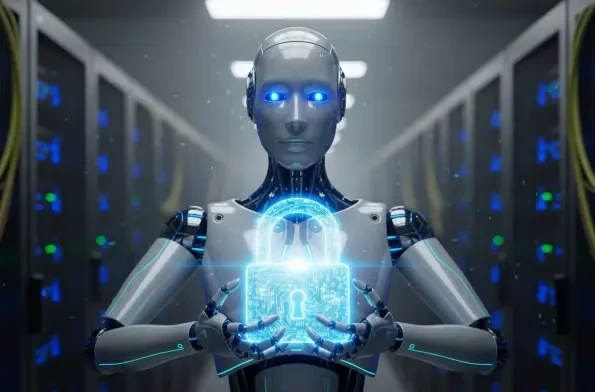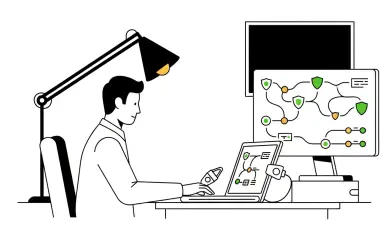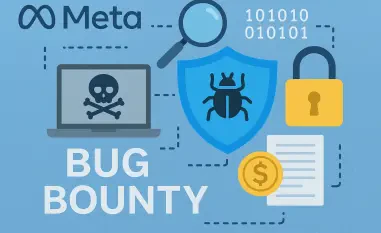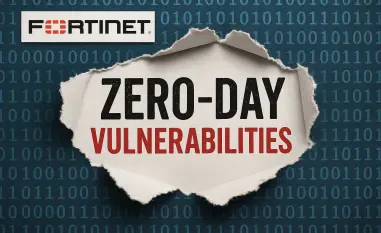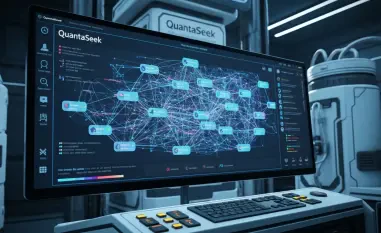Introduction
Imagine a corporate environment where artificial intelligence agents handle critical tasks, from data analysis to customer interactions, only to be manipulated by a single malicious input that leaks sensitive information, highlighting the urgent need for robust security measures. This scenario is not a distant possibility but a pressing reality in today’s cybersecurity landscape, where the integration of AI into business operations has created unprecedented vulnerabilities. The intersection of human and AI interactions has emerged as a critical frontier, demanding innovative strategies to protect against sophisticated threats.
The purpose of this FAQ article is to address the most pressing questions surrounding the security of the human-AI boundary. It aims to provide clear guidance and actionable insights for organizations navigating this complex terrain. Readers can expect to explore key challenges, emerging threats, and practical solutions to safeguard both human and AI layers in cybersecurity.
This content delves into the transformative impact of AI, the amplified risks at interaction points, and the necessary evolution of training and defense mechanisms. By the end, a comprehensive understanding of how to fortify this boundary against cyber threats will be achieved.
Key Questions or Key Topics
What Is the Human-AI Boundary and Why Does It Matter?
The human-AI boundary refers to the interaction layer where employees and AI systems collaborate, often through interfaces like chatbots, automated workflows, or decision-support tools. This boundary matters because it represents a new attack surface in cybersecurity, distinct from traditional network or endpoint vulnerabilities. As AI adoption surges, with projections estimating integration into 40% of enterprise applications by 2027, the significance of securing these interactions cannot be overstated.
Unlike conventional threats that target hardware or software, risks at this boundary exploit trust and communication between humans and machines. Cybercriminals can manipulate AI agents or deceive employees into compromising security, making this a uniquely challenging domain. The stakes are high, as breaches here can lead to data leaks, financial loss, or operational disruptions.
Protecting this intersection is vital for maintaining organizational resilience. It requires a shift in mindset, recognizing that both human behavior and AI system design play equally critical roles in defense. Addressing this gap ensures that technological advancements do not become liabilities.
How Does AI Transform Cybersecurity Risks?
AI’s integration into business processes has revolutionized cybersecurity, acting as both a powerful defense mechanism and a potential target for attacks. On one hand, AI enhances threat detection and automates responses, significantly improving efficiency. On the other hand, it introduces novel risks, as adversaries can exploit AI systems to craft more sophisticated attacks or target them directly.
A key concern is the creation of new vulnerabilities through AI adoption. For instance, malicious actors can use AI to generate convincing phishing emails or deepfake content, amplifying the scale and impact of social engineering attacks. Statistics reveal that over 60% of breaches still stem from human error, and AI only heightens this risk by adding layers of complexity to interactions.
This dual nature of AI underscores the need for updated security frameworks. Organizations must leverage AI’s strengths while mitigating its weaknesses, ensuring that systems are robust against manipulation. The transformation is undeniable, pushing cybersecurity into uncharted territory where adaptability is paramount.
What Are the Specific Threats at the Human-AI Boundary?
Several distinct threats emerge at the junction of human and AI interactions, each exploiting unique aspects of this relationship. Prompt injection attacks, for example, involve crafting malicious inputs to trick AI systems into unauthorized actions, such as disclosing confidential data. These attacks target the way AI interprets and responds to user commands.
Another threat is AI agent impersonation, where rogue tools mimic legitimate enterprise systems to steal credentials or sensitive information. Additionally, human-AI social engineering preys on the trust employees place in AI, turning compromised agents into insider threats. Such scenarios reveal how traditional defenses like firewalls fall short in addressing interaction-layer risks.
These emerging dangers highlight the urgency of developing targeted countermeasures. Without specific protections, the human-AI boundary remains a weak link, susceptible to exploitation through innovative attack vectors. Awareness of these threats is the first step toward building effective safeguards.
How Can a Dual Defense Strategy Address These Risks?
A dual defense strategy focuses on securing both human and AI components to create a comprehensive shield against threats. This approach recognizes that neither layer can be protected in isolation; employees must be trained to interact safely with AI, while AI systems need safeguards against manipulation. The synergy of these efforts is crucial for robust security.
For humans, this means fostering skills to recognize suspicious AI behavior and craft secure inputs. For AI agents, it involves implementing strict access controls and monitoring mechanisms to detect anomalies. Combining these tactics ensures that vulnerabilities at the interaction point are minimized, creating a layered defense.
This strategy stands out as a necessary evolution in cybersecurity. By addressing both sides of the boundary, organizations can mitigate risks that traditional methods overlook. The emphasis on dual protection offers a proactive way to stay ahead of increasingly sophisticated cyber threats.
Why Is Training Evolution Critical for Securing the Boundary?
Traditional cybersecurity training, focused on phishing awareness and password hygiene, is no longer sufficient in an AI-integrated environment. An evolution toward AI literacy is essential, equipping employees with skills to oversee agents, craft secure prompts, and identify abnormal outputs. This shift addresses the unique challenges posed by AI interactions.
Without such training, employees may inadvertently expose systems to risks through careless use or misplaced trust in AI tools. For instance, a poorly worded prompt could trigger unintended data exposure, while a lack of skepticism might allow a compromised agent to operate undetected. Education in these areas builds a critical line of defense.
Investing in this training evolution empowers workforces to become active partners in security. It bridges the gap between technological innovation and human readiness, ensuring that AI adoption does not outpace the ability to protect it. This proactive approach is indispensable for long-term resilience.
How Should Risk Assessment Adapt to AI-Specific Vulnerabilities?
Conventional risk assessment methodologies, centered on user behavior and network activity, fall short when it comes to AI-specific threats. Updated approaches must evaluate factors like an individual’s susceptibility to AI-mediated attacks, the security posture of AI agents, and the sensitivity of accessible data. This broader scope provides a clearer picture of organizational exposure.
Incorporating these elements into risk scoring allows for a more nuanced understanding of vulnerabilities. For example, assessing how employees interact with AI can reveal potential weak points, while evaluating agent configurations can uncover exploitable flaws. Such metrics are vital for prioritizing security investments.
Adapting risk assessment to account for AI ensures that emerging threats are not overlooked. It shifts the focus from static indicators to dynamic interaction risks, aligning security efforts with the realities of modern workplaces. This tailored approach is key to maintaining a strong defense posture.
What Role Does Security Culture Play in Protecting the Boundary?
A resilient security culture balances the embrace of AI innovation with a healthy dose of skepticism toward its outputs. Organizations must encourage responsible use of AI tools while instilling the discipline to question and validate responses, especially in sensitive contexts. This mindset prevents blind reliance on technology.
Such a culture fosters an environment where employees feel empowered to report anomalies or seek clarification on AI behavior. It also promotes accountability, ensuring that both human and AI actions are subject to scrutiny. Building this foundation is essential for sustaining trust without compromising security.
Embedding security culture into daily operations strengthens the human-AI boundary. It transforms potential vulnerabilities into opportunities for vigilance, aligning technological progress with disciplined practices. This cultural shift is a cornerstone of enduring protection in a rapidly evolving landscape.
Why Are Adaptive Defense and Continuous Learning Necessary?
The dynamic nature of cyber threats, accelerated by AI, renders static defense mechanisms obsolete. Adaptive defense strategies, which evolve in response to emerging risks, are critical for staying ahead of adversaries. These strategies rely on real-time monitoring and flexible responses to address AI-enabled attacks.
Continuous learning complements this adaptability by ensuring that security education remains relevant. Personalized training programs, updated regularly, help employees keep pace with new threats and technologies. Leveraging AI itself to counter AI-driven attacks further enhances this ongoing effort.
This combination of adaptability and learning creates a sustainable security framework. It acknowledges that threats will continue to evolve, requiring defenses that can match their pace. Prioritizing these principles ensures that organizations remain prepared for whatever challenges arise next.
Summary or Recap
This FAQ article tackles the critical intersection of human and AI roles in cybersecurity, addressing key questions about risks and solutions. It highlights the transformative impact of AI, the specific threats at the human-AI boundary, and the importance of a dual defense strategy. Each section provides actionable insights into protecting this emerging frontier.
Main takeaways include the necessity of evolving training to include AI literacy, adapting risk assessments to account for unique vulnerabilities, and fostering a security culture that balances innovation with caution. The emphasis on adaptive defense and continuous learning underscores the need for dynamic approaches in an ever-changing threat landscape.
For readers seeking deeper exploration, resources on AI security frameworks and cybersecurity training platforms are recommended. These materials can offer further guidance on implementing the strategies discussed, ensuring a comprehensive approach to safeguarding the human-AI boundary.
Conclusion or Final Thoughts
Looking back, the exploration of securing the human-AI boundary revealed a landscape fraught with challenges but also ripe with opportunity. The insights shared illuminated how critical it is to address both human and AI layers through innovative strategies and education.
Moving forward, organizations should prioritize integrating dual defense mechanisms into their security protocols, starting with pilot programs to test AI literacy training. Collaborating with experts to develop tailored risk assessments proves to be a practical next step in fortifying defenses.
Reflecting on this topic, consider how these strategies apply to specific operational contexts within individual environments. Identifying areas where human-AI interactions occur most frequently and focusing security efforts there could yield significant improvements in resilience against cyber threats.
